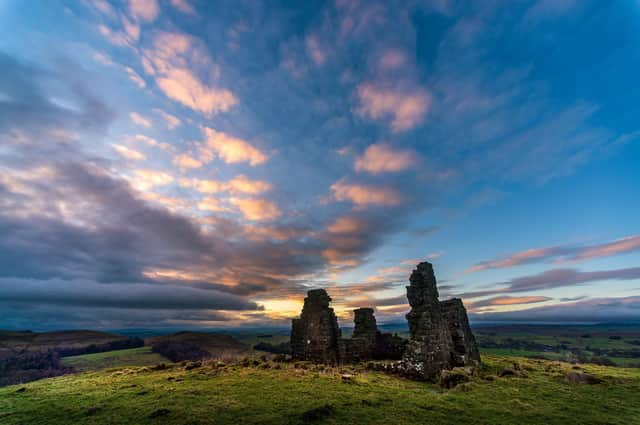Norton Tower ruins all that remain of North’s rebellion against Queen Elizabeth I


The three-storey tower is believed to have been built in around 1540 by Richard Norton of Rylstone Hall in what some believe to have been part of a dispute with another powerful local family.
The Rylstone Project website explains: “Legend has it that it was used to house watchers after a dispute with the Cliffords of Skipton Castle over hunting rights in Rylstone. It is more likely to have been a guard post for the associated rabbit warren. It may also have been used by its aristocratic owners for banqueting when they were out hunting.”
Advertisement
Hide AdAdvertisement
Hide AdHowever, less than 20 years later the involvement of the Norton family in the failed Rising of the North – an attempt to depose Queen Elizabeth and replace her with Mary Queen of Scots – the tower was effectively destroyed.
Richard Norton, several of his sons and other family members were central to the rebellion, which was a catastrophic failure.
The Rylstone Project website states: “Several Nortons were executed or imprisoned, and some fled abroad. For taking part in the ‘Rising’, four of Richard Norton’s ordinary servants from Rylstone were hanged near the village. His butler, Richard Kitchen, who rose in the rebellion with his master, was hanged in Ripon.”
The Nortons’ lands were handed over to the Clifford family and the tower is understood to have been slighted soon after.
Advertisement
Hide AdAdvertisement
Hide AdIn 1969, the ruins were given a Grade II listing to protect them and repairs and restoration work of what remains was carried out by the Yorkshire Dales National Park Authority both in the early 1980s and 2017.
It means the ruins will continue to be enjoyed for generations to come, even if the tower itself was ultimately very short-lived.
Technical details of photograph: Nikon D4, 14mm lens, ND filter, exposure of 10 seconds at f/16, ISO 50.
Support The Yorkshire Post and become a subscriber today. Your subscription will help us to continue to bring quality news to the people of Yorkshire. In return, you’ll see fewer ads on site, get free access to our app and receive exclusive members-only offers. Click here to subscribe.
Comment Guidelines
National World encourages reader discussion on our stories. User feedback, insights and back-and-forth exchanges add a rich layer of context to reporting. Please review our Community Guidelines before commenting.